Review: 2012 Buick LaCrosse EAssist

GM’s track record has been less than stellar. First we had the Saturn Vue Green Line, a very “mild” hybrid that paled next to competitors like the Ford Escape. Next came the extraordinarily expensive 2-mode hybrid system used in GM’s pickup trucks and full-sized SUVs, which cost far too much and delivered far too little. Finally, we have the Volt – ’nuff said. No wonder GM’s latest hybrid endeavor has come to market with little fanfare, no “hybrid” logos on the vehicle and no hybrid branding from GM. Can we honestly call the 2012 Buick LaCrosse eAssist a hybrid?
While the LaCrosse’s styling is dominated by slab sides and FWD proportions, the overall look is handsome, even elegant. Compared to the ES350, the Buick looks a touch more sedate while looking less like its kissing cousin the Chevy Malibu. The fairly high belt-line and increasingly popular four-door-coupe roof-line give the 16.5 foot long Buick an almost modern flair (without being so modern as to drive away traditional Buick shoppers.) Despite the modern styling, Buick has stuck to their dubious “ventiports” which make even less sense now than before with our 4-cylinder LaCrosse sporting six portholes. Maybe port 5 represents the motor and 6 is the battery?
While the new LaCrosse’s interior is not class leading in any way, it is uniquely styled. Personally I’m not a fan of the steeply sloped doors but the 40-inches of rear leg room may compensate for that. The dashboard in our tester sported Buick’s new “stitched” dash which is an injection molded plastic dash that has “cuts” molded in and is then stitched with thread to give the look of a stitched dash without the cost. Overall, the effect works, but the acres of fake wood are less convincing. I understand the need to differentiate between Cadillac and Buick, but the lack of real tree in the LaCrosse is a problem when Buick’s self-proclaimed Lexus competition having plenty of burl-forest standard.
While many hybrid vehicles ditch the folding rear seats due to the battery pack’s location, the LaCrosse continues to offer a pass-through – although it is about 50% smaller than the V6 model’s hole-in-the-trunk. Also on the list of complaints is a trunk that has shrunk to 10.7 cubic feet and is still hampered by trunk hinges that restrict the cargo area. The lost space is given to the hybrid battery pack and associated cooling ducts. Instead of a spare tire in the trunk you’ll find an empty cavity with a tire inflation kit. Why not toss the battery into the unused spare tire space?
The first generation Belt-Alternator-Starter or BAS system GM used in the Saturn Vue and Chevy Malibu “hybrids” was unloved by the press, ignored by shoppers and euthanized after a short time on the market. Instead of trying to resurrect the fantastically expensive “two-mode” system, GM went back to basics and fixed what was wrong with the BAS hybrid in the first place. GM threw out the ancient 4-speed automatic and replaced it with a new 6-speed unit. The two extra gears allowed Buick to change the final drive ratio for better “hybrid” performance while still having a fairly broad range of lower gears for passing and take-off. Next, they ditched the low-capacity 36V NiMH battery replacing it with a modern 115V lithium-ion pack. The transformation was finished off by a liquid-cooled motor/generator packing three times the punch of the previous generation (15HP and 79lb-ft of torque). In addition to being more powerful, the motor and electronics are designed for nearly continuous use allowing the hybrid system to operate over a broader range of speeds and conditions. The result is a 0.2 second improvement in the LaCrosse’s 0-60 time and a 25% improvement in fuel economy over the outgoing un-eAssisted LaCrosse. Despite the improvements, GM decided to take a cautious approach and is not calling the new system a hybrid, nor are they including the motor’s assistance in the 182 horsepower or 172 lb-ft torque numbers. The ES350, on the other hand, is inexplicably unavailable as a hybrid.
The addition of a battery and motor alone didn’t achieve the 25 MPG city and 36 MPG highway numbers – the Lacrosse eAssist relies on active grille shutters, altered gear ratios, low rolling resistance tires, a new trunk spoiler, and aero improvements under the car to help get these numbers. The combination of eAssist and the other improvements are what increase the all-important combined economy score from 23 mpg to a 29 mpg. The highway figure of 36 mpg is possible due to the new final drive ratio, which allows the 2.4L engine to spin at a leisurely 2,000 RPM at 70MPH. Without eAssist, this would be a problem upon encountering a slight rise in the terrain as GM’s 6-speed auto is notoriously reluctant to down shift. Fortunately, the 79lb-ft of torque provided by the BAS motor enables the LaCrosse to deal with freeway overpasses and gentle rolling hills without downshifting or slowing. In comparison, the Acura TL delivers 20/29 MPG, the ES350 is less efficient at 19/28 and the Lincoln MKS rounds out the bottom of this pack at 17/25. The Buick is by far the least powerful in this group and some might rightly compare it to Lincoln’s premium hybrid, the MKZ, which returns 41/36 MPG, but the MKZ is a smaller vehicle.
On the tech front, our LaCrosse was equipped with the standard 8-inch touchscreen radio and optional navigation system. I found the user interface considerably easier to use than the system in the Cadillac CTS, and was amused by graphics and colors reminiscent of Star Trek The Next Generation. Buyers not willing to spend $1,345 on the optional nav system, can still get turn-by-turn directions via OnStar, although only the first 6 months of the service are free. iPhone and iPod integration are easy to use, and the user interface is very responsive. Unfortunately the maze of physical buttons are not as intuitive as the on-screen menus. Even after a week, I was unable to stab a button in the dark without taking my eyes off the road. Buick offers blind-spot monitoring on the LaCrosse in a $1,440 “confidence package” which also includes steering xenon headlamps and GM’s vacuum-fluorescent heads up display. You can see some images of the HUD in the gallery below. The monochrome display shows basic navigation instructions, speed and a digital tach but falls well short of the polish BMW’s HUD possesses. Absent at any price is adaptive cruise control or collision warning, features available in a majority of the competition including the ES350.
Out on the road the LaCrosse handles just like you’d expect from 3,835lbs of Buick; it squats, dives and serves up plenty of body roll in the corners, but then again so do the Lexus, Hyundai Azera and Lincoln MKS. If you want sporty and can handle the looks, roll into an Acura dealership for a TL. Buick has set pricing for the LaCrosse eAssist at $29,045 for the base model. Should you step up to the “LaCrosse with Convenience Group” at $29,600, you can choose between the 303 HP V6 or the eAssist drivetrain for the same price. AWD LaCrosse models are available only with the 3.6L engine. While Buick is quick to call the engines choice a “no-cost option”, the eAssist base model is $2,830 more than last year’s base four-cylinder model. At essentially 30-large, the base eAssist LaCrosse compares favorably with the $36,725 base price of the ES350.
As our week with the LaCrosse ended I was more confused about eAssist than I was when it started. This confusion has nothing to do with the actual system itself which worked flawlessly and had a decent impact on fuel economy, it had everything to do with GM’s naming conventions. Somehow I’m not be surprised that the first hybrid viable hybrid from GM, mild or otherwise, would receive little fanfare. While the LaCrosse will never set your heart alight with excitement, it combines an excellent ride, cabin noise levels that Rolls Royce engineers are probably trying to replicate and decent fuel economy with a $35,195 as tested MSRP. While I’d probably still buy the more expensive ES350 ($41,240 similarly equipped), the Buick is a solid product with decent mileage at a compelling price.
Buick provided the vehicle, one tank of gas and insurance for this review
Specifications as tested
0-30 MPH: 2.8 Seconds
0-60 MPH: 7.9 Seconds
1/4 Mile: 16.22 Seconds at 85.7 MPH
Average Fuel Economy: 29.9 MPG over 674 miles

More by Alex L. Dykes
Latest Car Reviews
Read moreLatest Product Reviews
Read moreRecent Comments
- Lorenzo The Renaissance Center was spearheaded by Henry Ford II to revitalize the Detroit waterfront. The round towers were a huge mistake, with inefficient floorplans. The space is largely unusable, and rental agents were having trouble renting it out.GM didn't know that when they bought it. They just wanted to steal thunder from Ford by making it their new headquarters. Since they now own it, GM will need to tear down the "silver silos" as un-rentable, and take a financial bath.Somewhere, the ghost of Alfred P. Sloan is weeping.
- MrIcky I live in a desert- you can run sand in anything if you drop enough pressure. The bigger issue is cutting your sidewalls on sharp rocks. Im running 35x11.5r17 nittos, they're fine. I wouldn't mind trying the 255/85r17 Mickey Thompsons next time around, maybe the Toyo AT3s since they're 3peak. I like 'em skinny.
- Adam4562 I had summer tires once , I hit a pothole the wrong way and got a flat tire. Summer tires aren’t as durable as all season , especially up in the northeast . They are great of u live in Florida or down south . I have all season tires which are on my Subaru which is awd. My mom has a car so she switches from all season to snow tires . I guess depends on the situation
- MaintenanceCosts I hope they make it. The R1 series are a genuinely innovative, appealing product, and the smaller ones look that way too from the early information.
- MaintenanceCosts Me commenting on this topic would be exactly as well-informed as many of our overcaffeinated BEV comments, so I'll just sit here and watch.



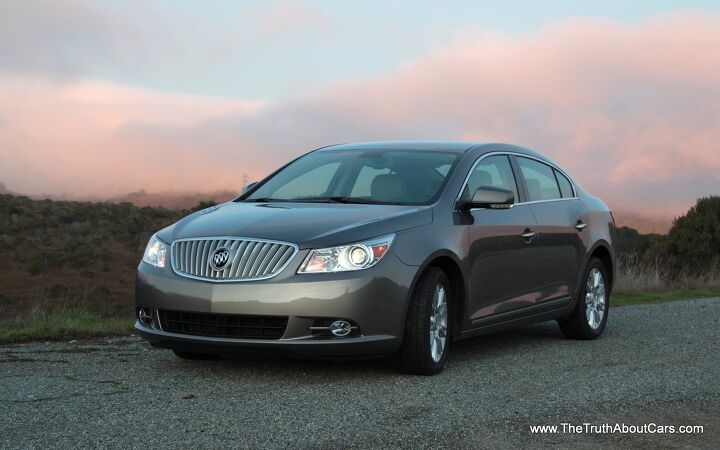








































































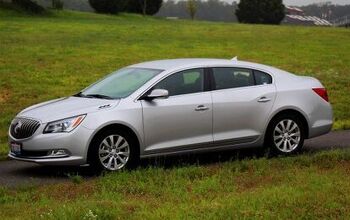
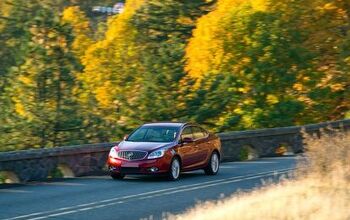
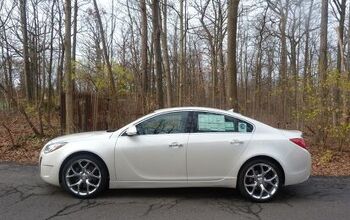
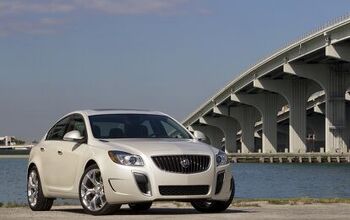











Comments
Join the conversation
This car needs more trunk room. Other than that, it's quite nice.
I give GM credit for releasing this car with the beefed up start/stop system on what is essentially a regular car. I think Mazda is/was on the fence about releasing a car here with the same capabilities. If you want a start/stop system on any other car, most of the time they only are on hybrids. Back when I commuted in Atlanta traffic, I would have loved to have a car like this; well equipped, with good fuel mileage. The ability to have the engine shut off while stopped (and I was stopped a lot in that traffic) would have saved a lot of fuel. I guess that's the real issue with the BAS system, it would work better in the heavier traffic jams. I think that this 2nd generation would work fine for most people, as it appears to be transparent. Even though it's similar in concept and execution to the Honda IMA, it was a mistake for GM to market it as a "hybrid", as Toyota gained the mindshare for that word. Lesson learned I guess...